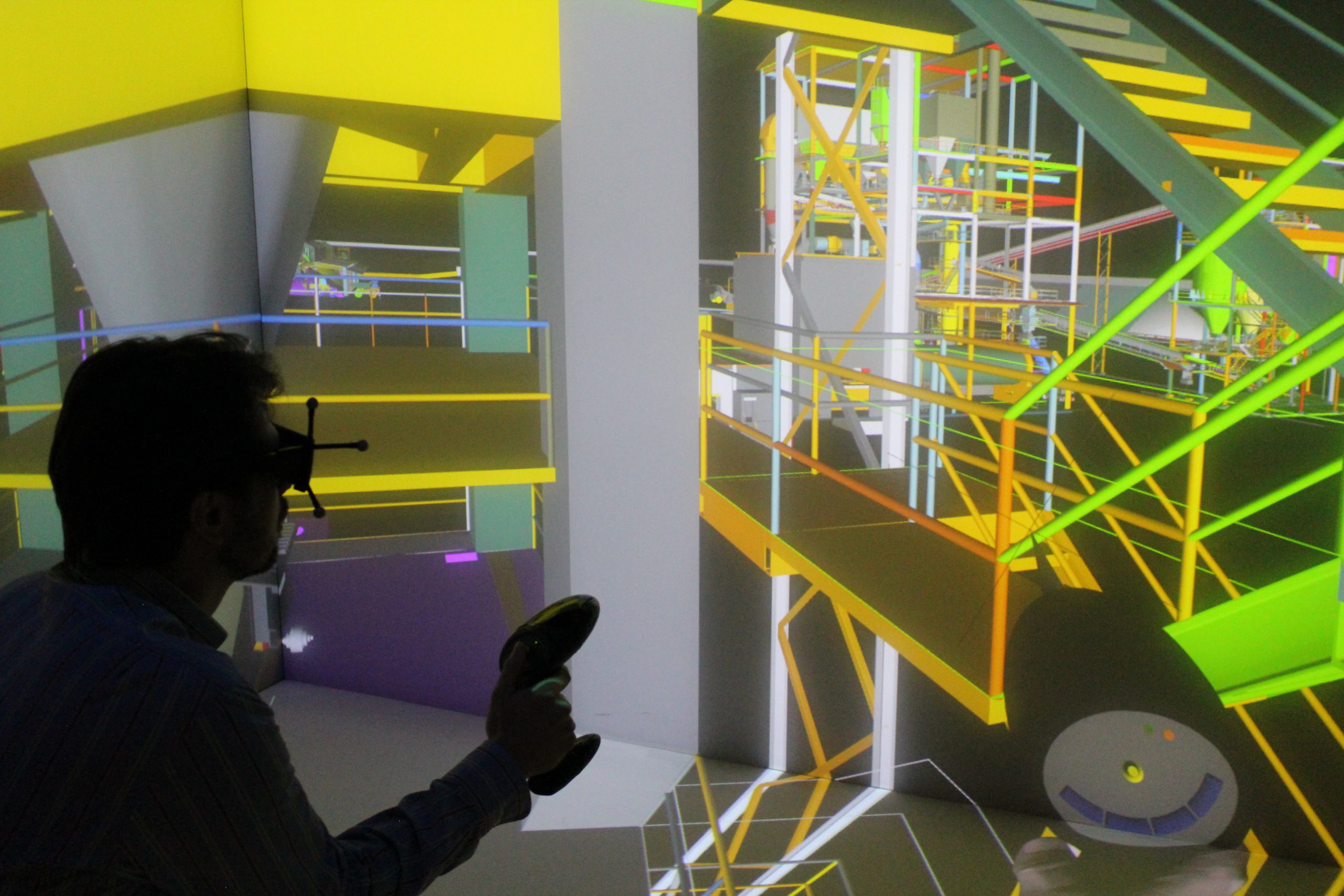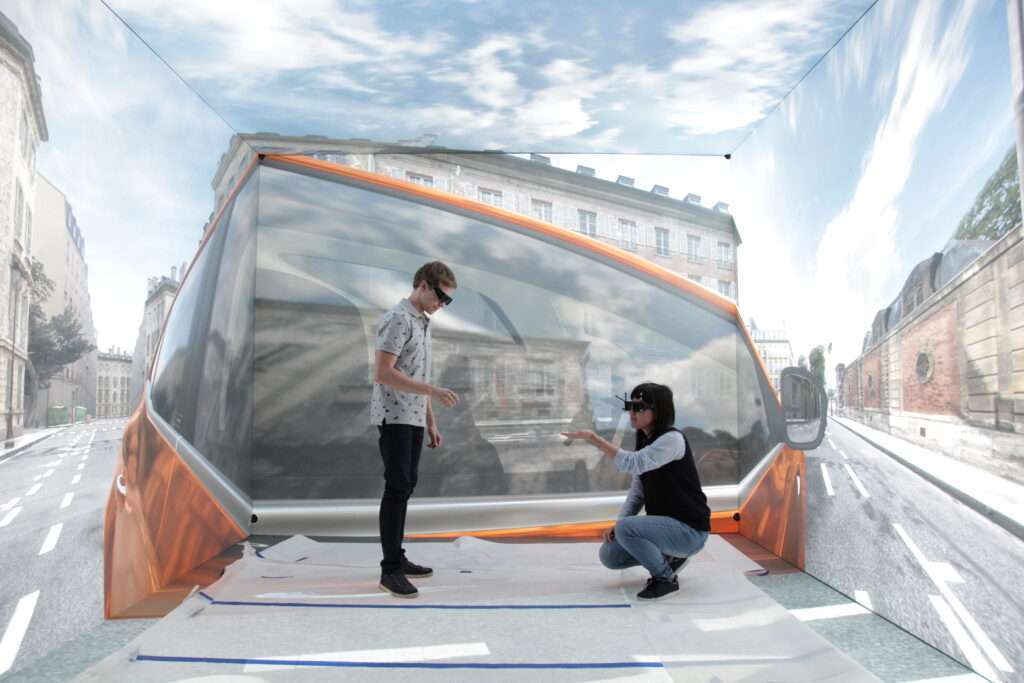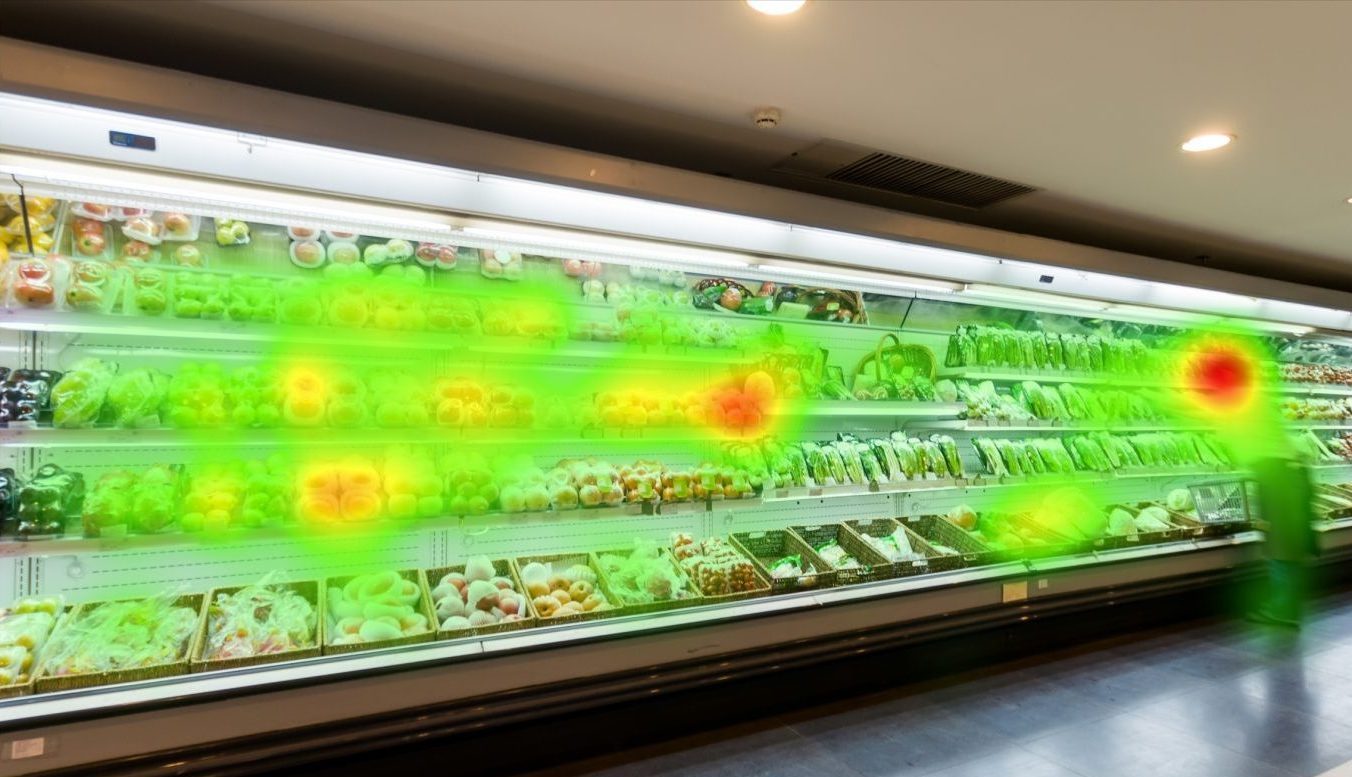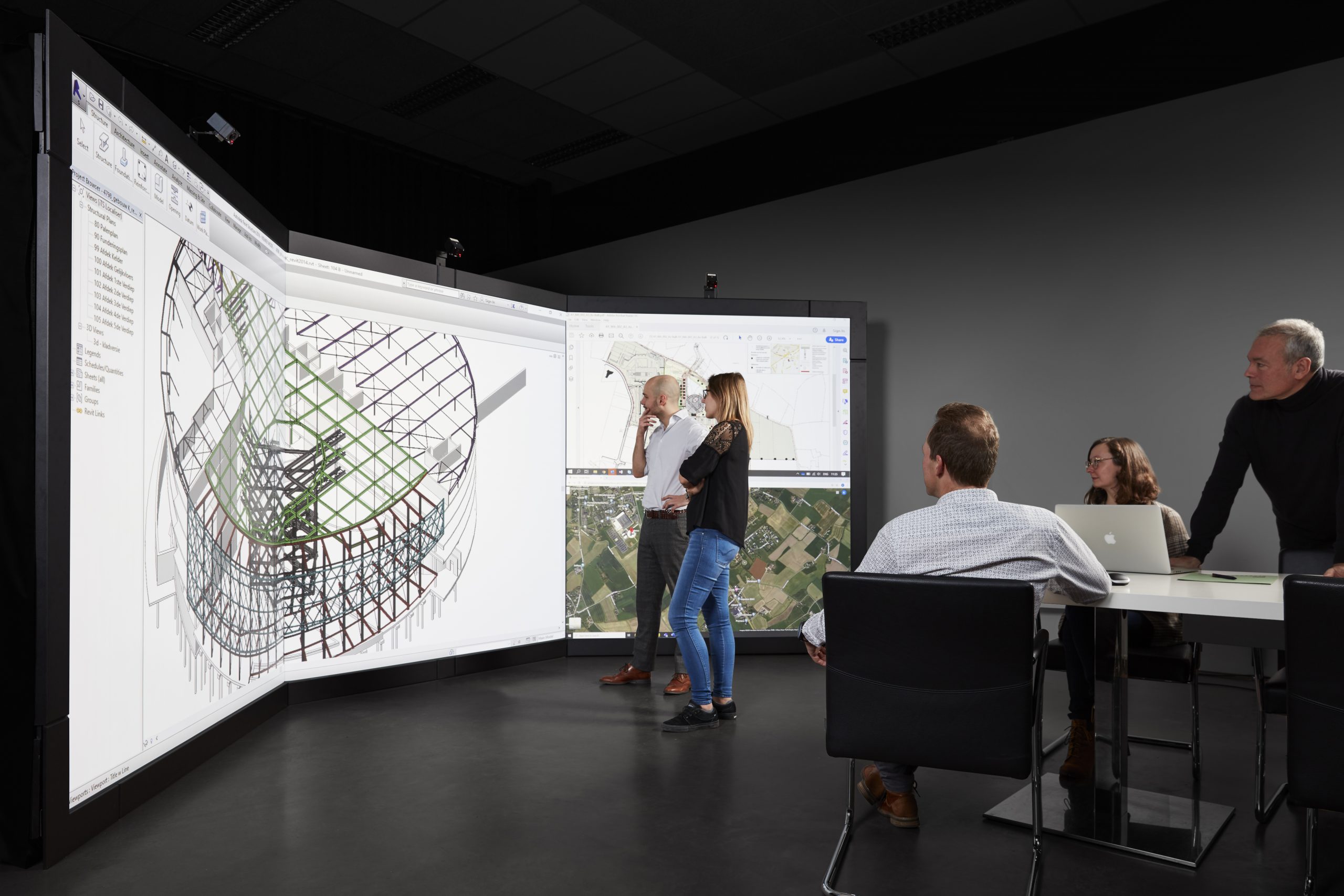Virtual reality (VR) is now more widely available and technically advanced, meaning it is being used across the majority of the industries in many ways and is helping businesses grow.
No matter how big or small the company, virtual reality can benefit industrial operations, sales and marketing, planning, product design, prototyping and much more. And, today more than ever, VR is approachable and can be integrated into workflows by scientists, doctors, dentists, engineers, architects, archaeologists, and even defence personnel.
Many businesses are coming up with new and different approaches to integrate virtual reality into their organisation in ways that could benefit their customers, clients and even employees. The key thing to note is that VR is most effective when it becomes an integral part of processes or objectives, rather than as a bolted-on extra.
A user can experience the virtual world by either using large-scale CAVE display, or an head-mounted display (HMD).
Augmented reality (AR) has helped set the tone for technological integration, with increased interaction between users and smartphones and other devices; but VR takes things further, using immersive experiences in real-world business contexts.
Integration of VR Into Business Sectors
There is a growing range of business sectors that are benefitting now, and can in the future, from VR integration.
This extends the use of VR beyond established markets, and into the engineering, construction, manufacturing, defence, design and retail, and automotive sectors.
What it comes down to is these industries realising and exploring the potential of virtual reality to expand their horizons and enable them to improve their processes, systems and products.
A simplistic view of VR is that it involves someone wearing a headset and experiencing a simulated environment. However, VR has evolved and now encompasses large-scale displays, VR CAVE installations, while headsets themselves are becoming increasingly sophisticated. It is best to understand VR as an advanced, but highly practical, tool with a huge amount of potential for businesses to unlock and exploit.
VR Integration Applications
Maximising the potential of VR for business growth requires recognising how using it will work to enhance, improve or even revolutionise how you currently do certain things.
VR is a highly-effective application that can be deployed across different business functions, from R&D right through to marketing and sales.
As such, it can function at all stages of a product's lifecycle, from concept and inception to customer engagement and selling the end-product.
Uses for VR integration include:
- Product development
- Collaboration
- Data visualisation
- Marketing and sales
1- Product Development
In product development, virtual reality is transforming how companies design, test and prototype products. Virtual prototyping enables designers and engineers to gain detailed insights into the workings of products well before committing any resources to creating something physical.
This helps save time, and money, by allowing for refining and interrogating designs much earlier in the process in a way that is highly detailed, life-like and immersive.
Designers and engineers can minimise errors or uncover potential weaknesses and eliminate them.
VR also allows them to show detailed visuals to clients at an early stage, helping to sell concepts and gain approval for them before proceeding to physical prototyping or production.

2- Collaboration
Just as the digital world has accelerated and streamlined business communications, virtual reality collaboration is now much more efficient and advanced.
Imagine being able to walk people through a project, share its details collaboratively on a large screen, and also have participants contribute visually to this.
Large-scale VR displays allow for this kind of fully immersive, collaborative working.
For example, the Architecture, Engineering and Construction (AEC) industry is discovering the advantages that group VR offers for project planning, development and management.
Enhanced 3D visualisation and integration with other technology such as BIM (building information modelling) creates a powerful, integrated collaborative tool, where users can bring their own content and multiple users can have shared VR experiences.

3- Data Visualisation
Data is the lynchpin of modern business, providing key insights into consumer trends, customer behaviour and competitive markets. Businesses rely heavily on big data, but its value also depends on sharing it effectively as a knowledge source and communicating its insights accurately.
Data visualisation translates data into a dynamic, visual language, where users can draw conclusions and gain insights more easily. As a data visualisation tool, VR adds a greater visual impact, and widens the possibilities for how to display and interpret data visually.
In an immersive setting, users can feel they are interacting with the data more naturally, which also helps improve their comprehension of it.
VR also enables them to view data in multiple dimensions, and to cross-reference various sets and forms of data at the same time. At the same time, VR helps eliminate distractions.

4- Marketing and sales
The concept of try-before-you-buy is a popular one, but not something that you can apply universally to all products or services. However, using virtual reality as a marketing tool encourages potential customers to experience different environments and the effects of products in much broader contexts.
They can walk through a luxury apartment that they are buying off-plan before even its foundations have been completed.
They can experience a drive along a scenic Mediterranean route without ever leaving the car showroom. And VR is itself a marketing benefit, because it takes users out of their normal lives and transports them somewhere else entirely.
The head mounted display is still a relatively unusual thing for customers to encounter, which therefore adds to their whole shopping experience.

How ST Engineering Antycip Can Help
Exploring and harnessing the enormous potential of virtual reality means understanding firstly what this potential is, and secondly having the tools and expertise to turn it into a functional reality.
ST Engineering Antycip specialises in both these areas:
- We have expertise across a diverse range of sectors, providing VR solutions tailored to meet business objectives, and
- We have a network of specialist, collaborative partnerships with leading developers of VR platforms, hardware and software.
We can create unique VR systems, equipping businesses with advanced tools for design and review, collaboration, sales and marketing and other essential functions. We also specialise in providing specialist VR for military training applications.
For more information about how VR can help your business grow, please contact us.




















